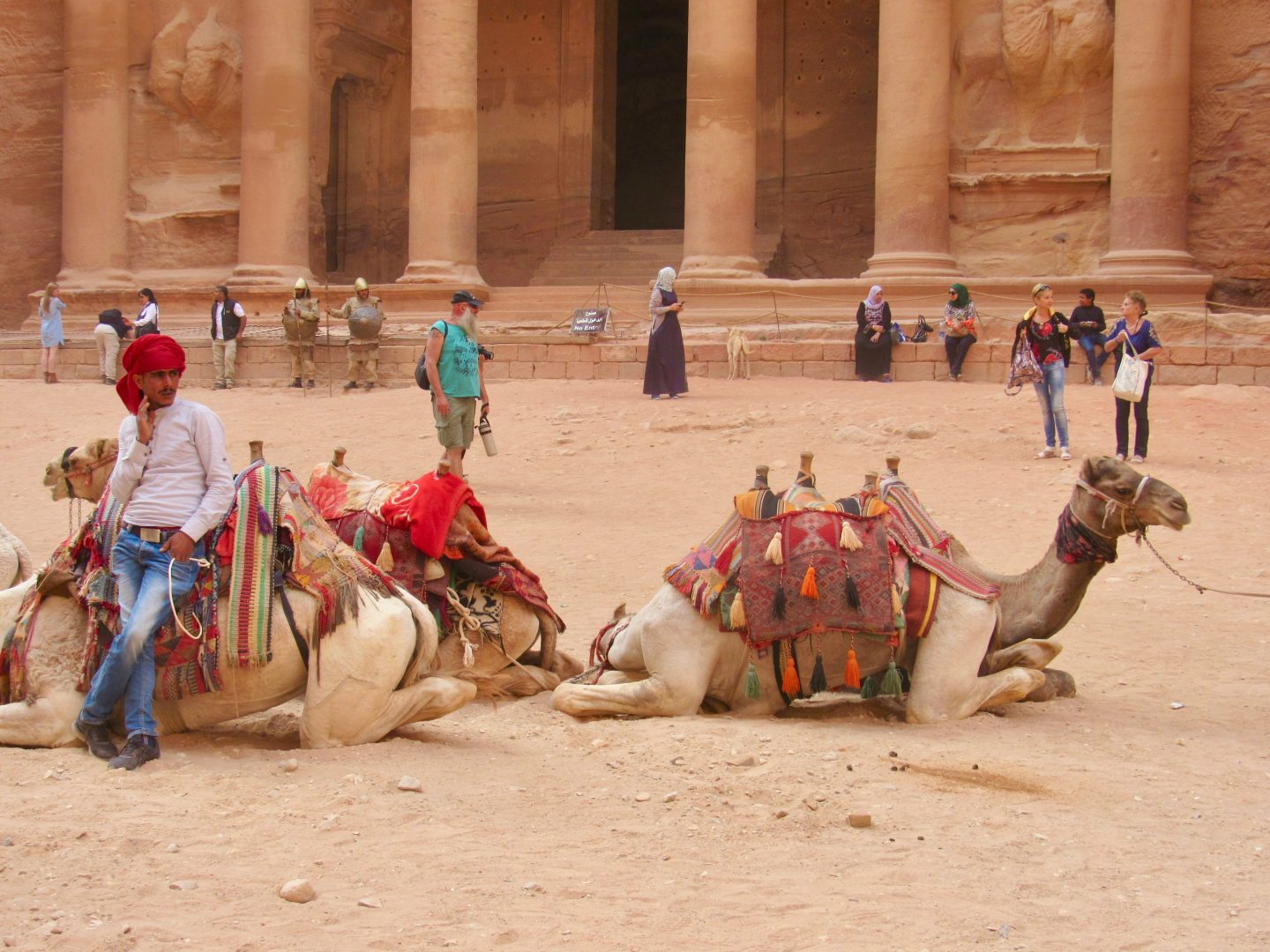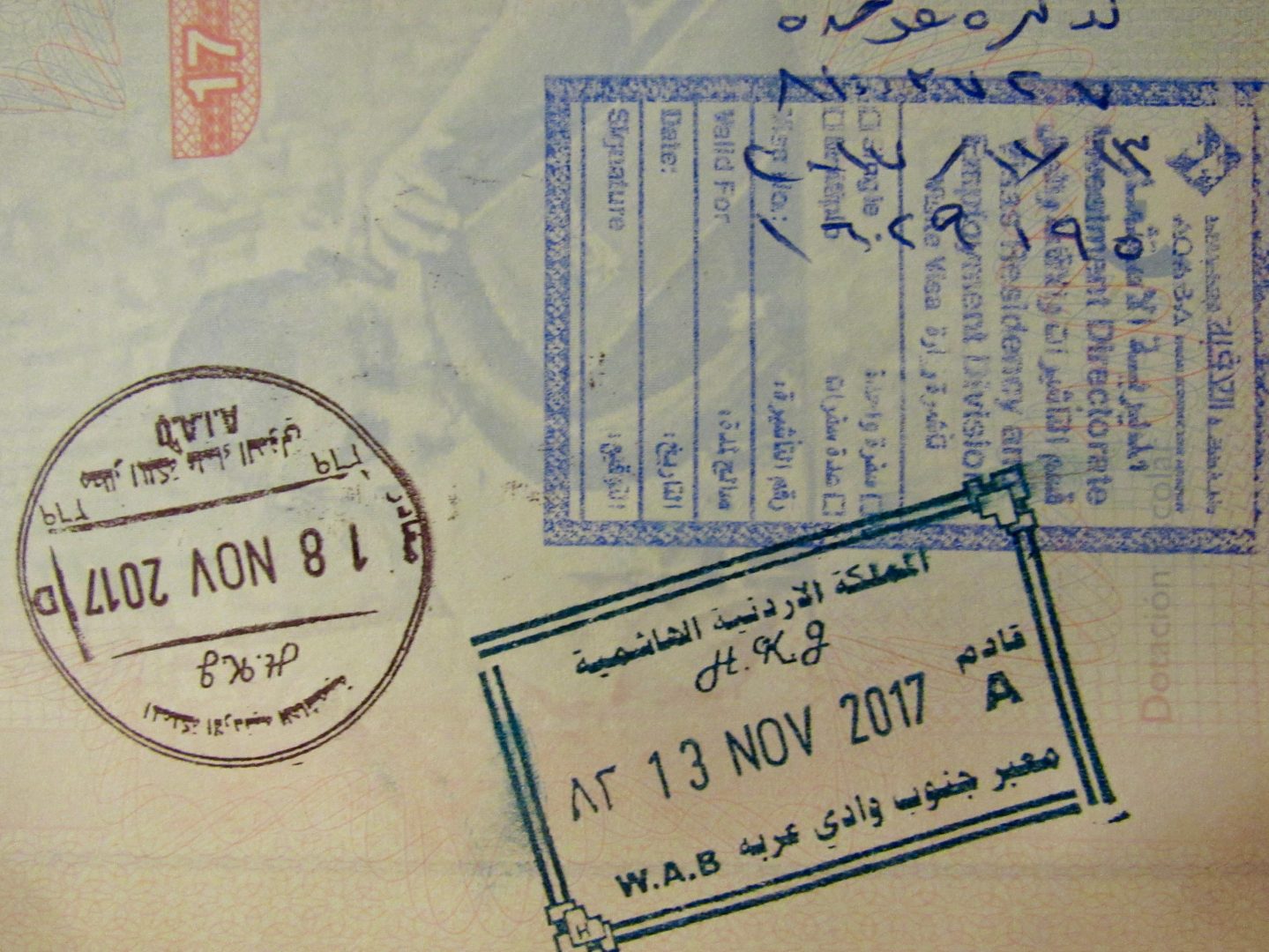We went to the Citadel of Amman on a Friday which is a day of rest in Jordan, since it is a Muslim country. There were no cars so it was very easy to drive to the citadel from our hotel in Amman. If you drive, you can park in a lot for buses and cars in front of the entrance. The citadel was built on Jebel Al Qala’a, the highest hill in the city. Be sure to appreciate the panoramic views, including the spectacular Roman theater of Amman that is very well preserved.

As we had bought the Jordan Pass, we

The Citadel of Amman was inhabited thousands of years ago
Few places in the world can say that they have been inhabited for as long as the Citadel of Amman. Its history begins in the Neolithic period, that is, between 10,000 and 2,000 B.C. In ancient times, the city was known as Rabbath-Ammon.

In the Citadel of Amman there is a cave dating from the 23rd century BC. Tombs like this exist in several places in Amman and contained several burials inside. They cut the limestone to be able to build these cavities which you can enter your visit. Years later in the Umayyad period (the same ones that built Anjar in Lebanon) the tomb was cleaned and reused to remove stones to continue building the citadel.

Artefacts found from the bronze era show that the hill was a fortress or agora, a space for commerce and politics. A wall of 1,700 meters surrounds the citadel. Originally in the bronze and iron eras they used a plaster material that made enemies slip if they tried to climb. Then it was reinforced in the Roman, Byzantine and Umayyad period.

The Greeks conquered the Citadel of Amman in 331 BC and the city was renamed Philadelphia. In the year 30 BC, the Romans arrived.

They did not make many architectural changes. More than anything, their arrival can be evidenced by the ceramics found.

A ruined Byzantine church built in 550 AD is what characterizes that period the most. There is only one floor plan and an inscription that says “… it was paved with mosaics for enthusiasm and work… You can no longer see the mosaics.

The hand of Hercules

The temple of Hercules was built in the period of Marco Aurelio in the 1st century BC. It is believed that it was built on another temple of some older native god because of a bare rock that is inside it. This rock may have been sacred in the Ammonite temple of Milcom in the 9th century BC.

It is not known exactly if that giant statue really existed, it is only presumed due to the amount of coins that were found with the effigy of Hercules.

Taking into account the size of the hand and elbow, the statue had to measure about 43 feet or 13 meters high, being one of the largest sculpted marble in history. The area suffered several earthquakes that probably caused the temple to fall.

Umayyad Period
In 661 AD the city became Muslim during the period of the Umayyads who stayed until 750. They built a palace structure, known in Arabic as al-Qasr. It did not last long since the structure was damaged by an earthquake in 749 and was never completely rebuilt.

The palace was probably built on a Greek palace. What can be seen today is the waiting room, decorated with a huge bronze dome covered in wood inside.

Visitors had to wait there until they could meet the governor in his palace behind. The restoration of this part is noticeable.

Next to this site you can see the ruins of a hammam, very popular in the Arab world. The residents came to socialize in the public toilet. In the intermediate area there were nine residential buildings with access to the street and squares. To the north, the main residence with an audience room and a throne room.

In 730 they built a huge cistern to collect rainwater. Not a single drop was spent, since the city had no aquifer. A sophisticated underground canal system was built to recycle water on site. Water was diverted from all ceilings to this cistern with 17.5 meters in diameter.

Jordan Archaeological Museum
I recommend you enter the Archaeological Museum of Jordan in front of the hand of Hercules. It was created in 1951 to show pieces found on the site and elsewhere in Jordan. This museum used to have the famous Dead Sea Scrolls that were found in Jordan by a Bedouin.

Much of what is seen in the museum is from the Nabatean period from the 4th century BC till 106 AD. The caravan trade was the most important economic activity of the Nabateans.

All traders from the Arab-Persian Gulf, Yemen and the Mediterranean passed through Petra. They developed pottery and were skilled in agriculture.

There are also a large number of Roman and Hellenistic period figures including animals such as lions.

The museum has a human skull that shows evidence of tremolo, an ancient surgical practice that involves making a hole in the patient’s skull. It is noted that he survived the first operation, but did not recover from the other three holes and died just after. This skull was found in Jericho.

The most interesting piece is the Ain Ghazal statue that is considered the oldest man-made figure. It was made between 8000-4000 BC and was found in a town near Amman.

A section of the museum is dedicated to burials. You can see huge coffins made of clay so that people could rest standing still. The piece where the faces go is cut and was painted with portraits of dead people. Each had two or three bodies when they were found. This burial practice dates from the 13th to 7th century BC and was done in very few places, including Sabah south of Amman.

The city of Amman grew around the citadel


The buildings have brown and beige tones, with few colors, usually only the mosques stand out. A large Jordanian flag can be seen in the background, as they are very proud of their heritage.

If you do not have a car you can go down some stairs to reach the Roman amphitheater of Amman and go for a walk to the central station where you will find many restaurants and shops.





